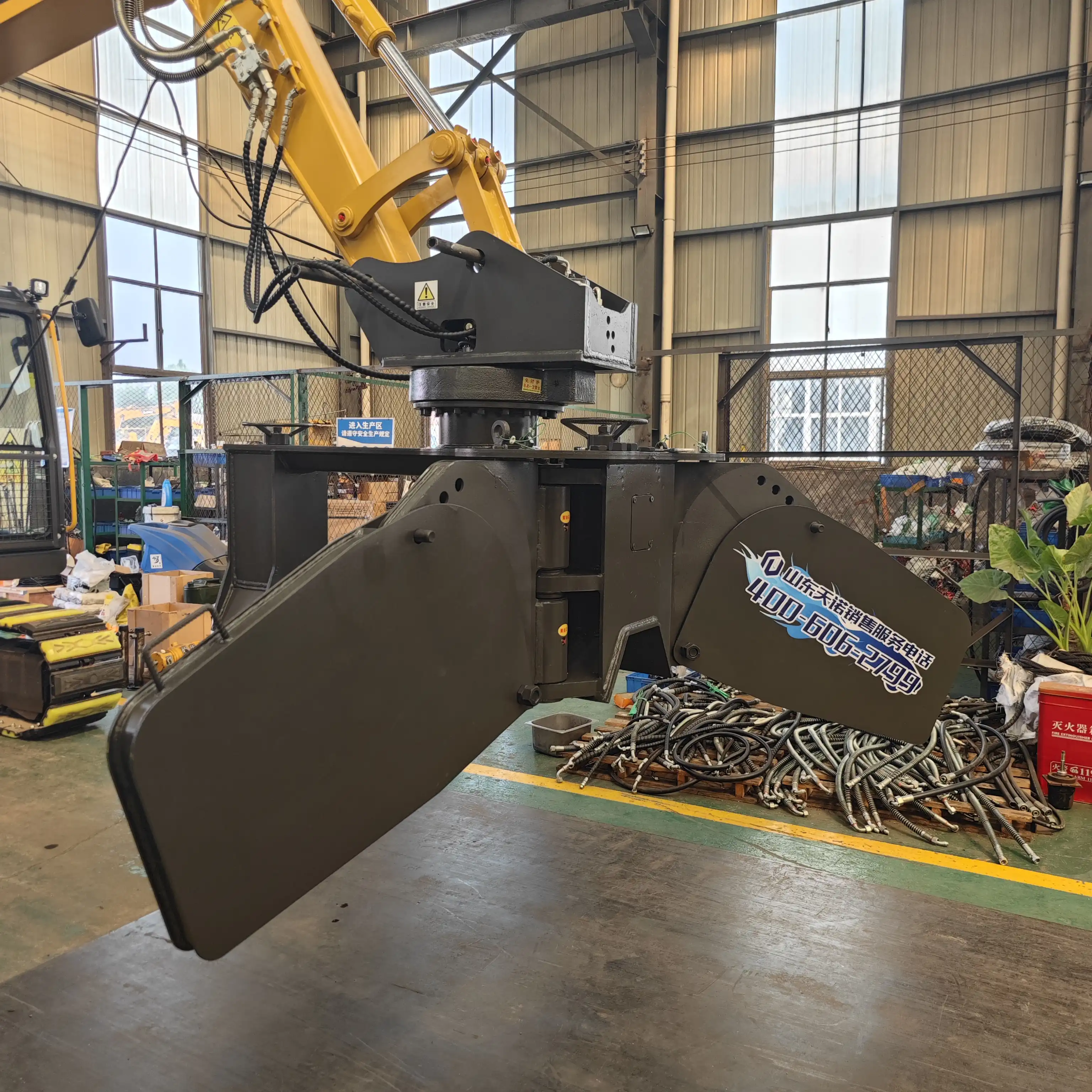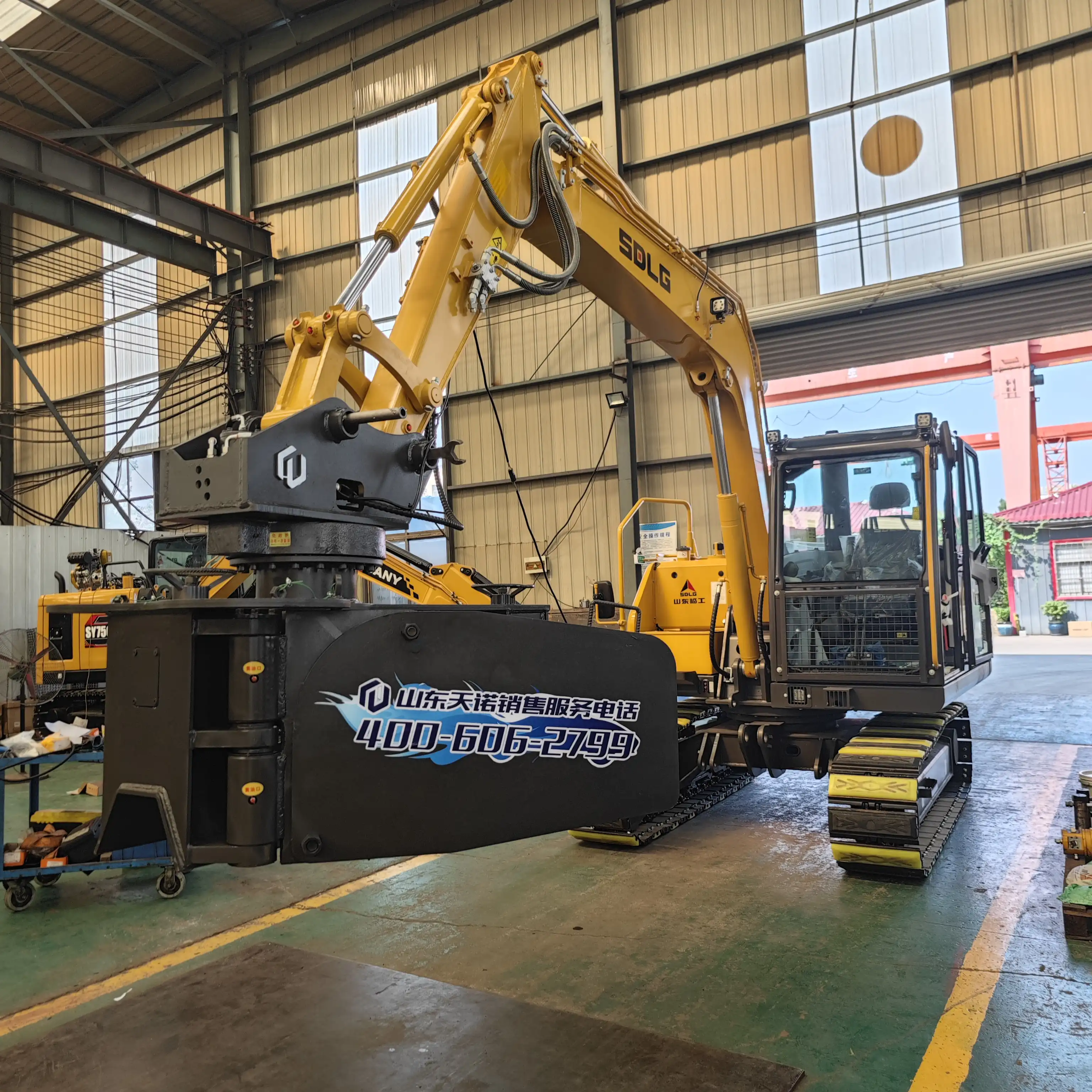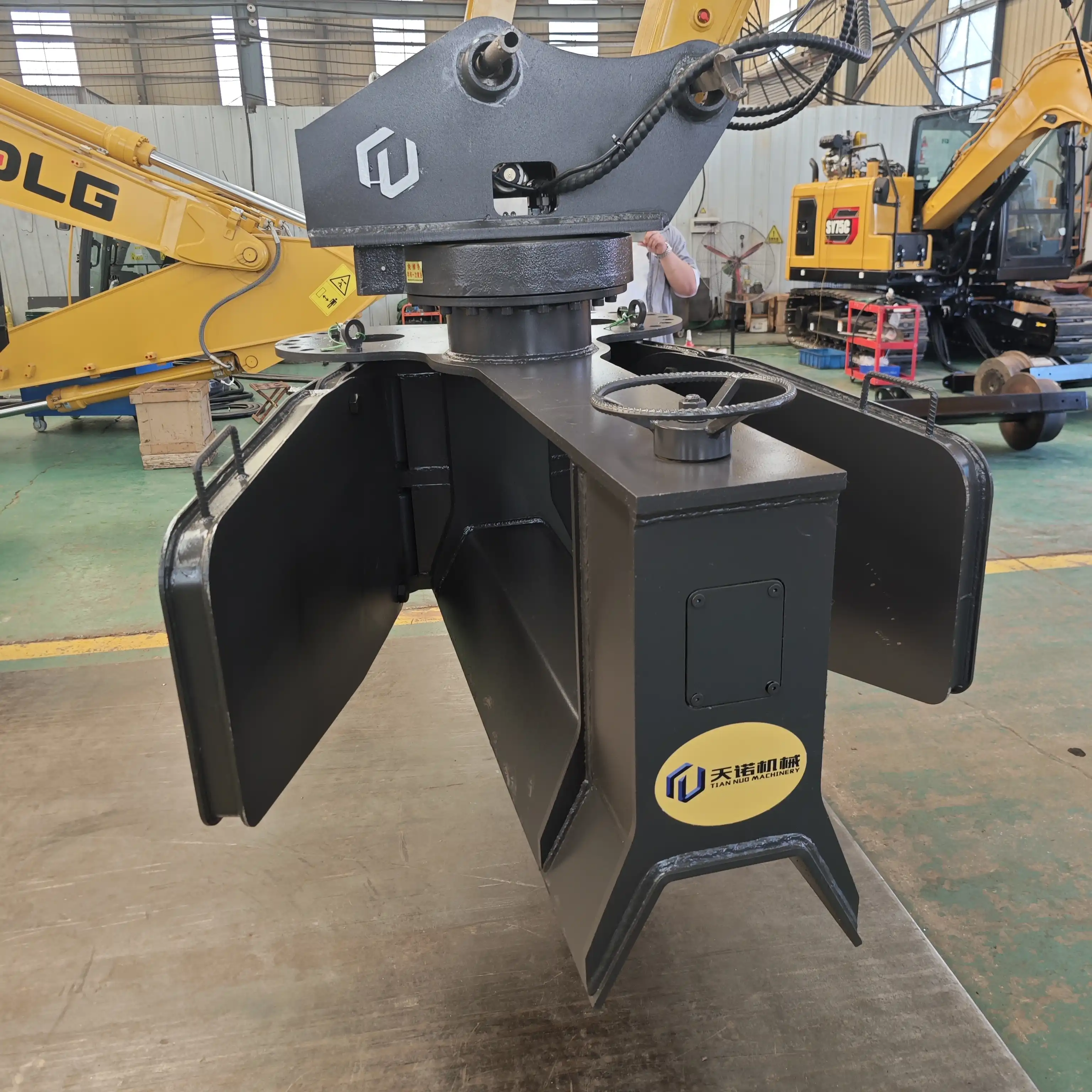What is railroad ballast plow made of?
A railroad ballast plow is primarily constructed from high-strength alloy steel plates that combine exceptional durability with optimal weight characteristics for railway maintenance operations. The core structure of a quality railway excavator ballast plow utilizes specialized steel alloys containing precise proportions of carbon, manganese, chromium, and nickel to achieve the perfect balance between hardness and flexibility required for demanding ballast manipulation tasks. These advanced metallurgical compositions typically feature Brinell hardness ratings between 400-500 HB, providing superior resistance against the relentless abrasion from coarse ballast materials while maintaining structural integrity during intense operational cycles. Complementing the main body construction, reinforced cutting edges often incorporate even harder materials (up to 550 HB) at critical wear points, while precision-engineered pivot mechanisms and hydraulic connection points utilize high-tensile fasteners and specialized bushings designed to withstand years of articulation under load. The thoughtful material selection and structural engineering behind modern ballast plows directly translate to extended service life, reduced maintenance requirements, and enhanced operational efficiency across diverse railway maintenance environments.
Primary Material: High-Strength Alloy Plate

Composition and Properties of Alloy Steel
The foundation of every quality railway excavator ballast plow begins with carefully selected alloy steel compositions tailored specifically for the demanding requirements of railway maintenance applications. These specialized steel alloys incorporate precise proportions of carbon (typically 0.25-0.45%) to establish baseline hardness while maintaining adequate ductility to absorb impact forces without brittle fracture. Manganese additions (1.2-1.6%) significantly enhance wear resistance while contributing to overall structural strength. More sophisticated alloys incorporate chromium (0.5-1.2%) and nickel (0.3-0.8%) to improve hardenability and low-temperature toughness across extreme operating conditions.
Modern ballast plow materials undergo advanced heat treatment processes, including controlled quenching and tempering cycles, that establish optimal microstructures throughout the material thickness. This metallurgical engineering creates the ideal balance between surface hardness for wear resistance and core toughness for structural integrity. The resulting mechanical properties typically include tensile strengths exceeding 1200 MPa, yield strengths above 1000 MPa, and elongation values between 10-15% that provide essential ductility for absorbing operational stresses. These properties directly translate to extended service life across diverse operational environments, from the extreme cold of northern railways to the intense heat of desert operations.
Material thickness varies strategically throughout the plow design, with primary structural members often utilizing 20-30mm plate to provide robust resistance against bending and torsional forces. Less stressed areas may incorporate thinner material (12-20mm) to optimize overall weight characteristics without compromising structural integrity. This thoughtful material distribution creates ballast plows that balance durability requirements against operational considerations, including the lifting capacity limitations of host excavators in the 7-15 ton class, most commonly used for railway maintenance operations.
Manufacturing Processes for Structural Components
The transformation from raw alloy steel into precision railway maintenance tools involves sophisticated manufacturing processes that preserve material properties while achieving exact dimensional specifications. The primary fabrication sequence begins with precision CNC plasma or laser cutting operations that shape individual components from a steel plate. These advanced cutting technologies maintain tight dimensional tolerances while minimizing heat-affected zones that could compromise material properties. The cutting process leverages digital design files that translate engineering specifications into precise cutting paths, ensuring consistent quality across production runs.
Following initial cutting, forming operations utilize hydraulic press brakes with computer-controlled backgauges to create the three-dimensional shapes required for effective ballast manipulation. Cold-forming techniques preserve the material's carefully engineered mechanical properties while achieving the complex geometries needed for optimal performance. Critical bends receive particular attention during this phase, with controlled forming radii that maintain material integrity while creating the structural shapes necessary for efficient ballast movement. Specialized tooling ensures consistent radius formation across high-stress areas, preventing stress concentration points that could lead to premature failure.
The assembly process relies heavily on precision welding techniques specifically calibrated for high-strength steels. Welding procedures carefully control heat input to maintain the base material's mechanical properties while creating structurally sound joints. Strategic weld sequencing minimizes internal stresses and potential distortion, preserving the exact dimensional specifications required for proper operation. Post-weld heat treatment processes relieve residual stresses created during fabrication, ensuring the final structure maintains dimensional stability throughout its service life while providing the full benefit of the carefully selected alloy materials incorporated into the railway excavator ballast plow design.
Material Quality Standards

The materials utilized in professional-grade ballast plows adhere to rigorous industry standards that ensure consistent performance and reliability in demanding railway maintenance applications. Steel plate typically conforms to standardized specifications like ASTM A514, EN 10025-6, or equivalent international standards for high-strength, wear-resistant applications. These specifications establish strict requirements for chemical composition, mechanical properties, and manufacturing processes that directly influence field performance. Compliance with these standards assures that materials will deliver the expected durability and structural integrity throughout the equipment's operational life.
Quality verification begins with certified material testing that documents the exact chemical composition and mechanical properties of each steel batch before manufacturing begins. Tensile testing establishes critical values like yield strength, ultimate tensile strength, and elongation that predict how materials will respond to operational stresses. Impact testing, often utilizing Charpy V-notch methodology, evaluates material toughness and resistance to brittle fracture across the temperature ranges encountered in service. Hardness testing correlates directly with wear resistance expectations, providing quantifiable values that ensure materials meet abrasion resistance requirements for ballast manipulation applications.
Manufacturing quality standards extend beyond raw materials to encompass fabrication processes that maintain material integrity throughout production. Welding procedures require qualification testing that validates joint strength, ductility, and microstructural characteristics. Non-destructive testing protocols, including ultrasonic, magnetic particle, and radiographic inspection, verify structural integrity throughout the completed railway excavator ballast plow before deployment to field operations. These comprehensive quality assurance systems ensure that each component meets or exceeds the mechanical requirements necessary for safe, effective operation throughout its service life.
Why are High-Strength Alloy Plates?

Resist Abrasion from Ballast Friction
Railway ballast creates one of the most abrasive operational environments in industrial applications, with angular crushed stone particles continuously grinding against equipment surfaces during maintenance operations. High-strength alloy plates with appropriate hardness characteristics provide the foundation for equipment that can withstand these extreme conditions without premature failure. The metallurgical composition of these materials, particularly the careful balance of carbon content and alloying elements, creates microstructures that resist multiple wear mechanisms simultaneously, including micro-cutting, plastic deformation, and surface fatigue commonly encountered in ballast manipulation.
Material hardness represents a primary factor in abrasion resistance, with higher Brinell values generally correlating with improved wear performance. However, excessive hardness can lead to brittle behavior that increases fracture risk under impact conditions. Modern railway excavator ballast plow designs utilize materials with carefully optimized hardness ranges (typically 400-500 HB) that balance wear resistance against necessary toughness. This balanced approach prevents catastrophic failures while maintaining adequate resistance against the continuous abrasive action of ballast particles during regular maintenance operations.
Withstand Bending/Torsion Forces During Plowing and Transportation
Beyond abrasion resistance, ballast plows experience complex loading patterns that include bending, torsion, and tensile forces during both operation and transportation. High-strength alloy plates provide the necessary mechanical properties to resist these multi-directional stress patterns without permanent deformation that would compromise equipment functionality. The elevated yield strength of these materials—typically exceeding 1000 MPa—establishes the threshold below which the material returns to its original shape after load removal, preventing the progressive deformation that would otherwise occur during regular service cycles.
Torsional resistance proves particularly critical during turning and positioning operations, where the extended geometry of the plow creates significant leverage against the mounting points. The combined high-strength characteristics and appropriate material thickness distribution provide the necessary resistance against these twisting forces without excessive weight that would limit host machine capabilities. This optimized strength-to-weight ratio ensures that equipment remains maneuverable while maintaining structural integrity throughout its operational envelope.
Impact resistance represents another critical performance characteristic during both operation and transportation. Sudden contact with embedded obstacles, frozen ballast, or track hardware creates shock loading that travels throughout the structure. The controlled ductility of properly selected high-strength alloys, typically providing 10-15% elongation, allows momentary deformation that absorbs energy without creating permanent damage. This energy absorption capability prevents the catastrophic failures that might otherwise occur when railway excavator ballast plow equipment encounters unexpected obstacles during maintenance operations across diverse track conditions.
FAQ

①What is the average lifespan of a railway ballast plow?
The average service life of a quality railway ballast plow constructed from appropriate high-strength alloy steel typically ranges from 7-10 years with proper maintenance. Operational factors like annual usage hours, ballast characteristics, and maintenance practices significantly influence actual service life. Regular replacement of wear components and periodic hardfacing renewal can extend the useful lifespan considerably beyond these baseline expectations.
②How does material hardness affect ballast plow performance?
Material hardness directly influences both wear resistance and structural behavior. Higher hardness values (measured in Brinell/HB) generally provide better abrasion resistance against ballast particles, but excessive hardness can reduce impact resistance and increase brittleness. Quality ballast plows balance these characteristics with primary structures typically ranging from 400-500 HB and cutting edges often utilizing materials up to 550 HB for optimal performance.
③How do manufacturers test the durability of ballast plow materials?
Material durability testing includes both laboratory and field-based evaluations. Laboratory testing typically includes abrasion resistance assessment (often using ASTM G65 or similar standards), impact testing for toughness verification, and accelerated wear testing that simulates operational conditions. Field validation subjects prototypes to monitored real-world operations, with detailed documentation of wear patterns, structural behavior, and overall performance across various operating conditions.
About Tiannuo

The materials used in railroad ballast plows represent a sophisticated engineering solution to the extreme demands of railway maintenance operations. From the carefully selected high-strength alloy plates that form the structural foundation to the specialized wear-resistant components that endure continuous abrasion, each material choice directly influences equipment performance, durability, and operational economics. The perfect balance between hardness for wear resistance and toughness for structural integrity creates maintenance tools that deliver reliable performance across diverse operating conditions while providing the longevity necessary for favorable lifecycle economics.
Understanding these material characteristics provides valuable insight when evaluating equipment options for railway maintenance operations. The initial investment in quality materials and manufacturing processes typically returns significant value through extended service life, reduced downtime, and more consistent performance throughout the equipment lifecycle. As railway maintenance demands continue evolving toward higher efficiency and reduced track possession times, the importance of optimal material selection in maintenance equipment becomes increasingly significant for operational success.
Tiannuo Construction Machinery Co., Ltd specializes in manufacturing premium railway excavator ballast plow equipment using carefully selected high-strength alloy materials engineered specifically for railway maintenance applications. Our ballast plows feature optimized hardness characteristics, strategic material thickness distribution, and replaceable wear components that maximize service life while maintaining consistent performance. Compatible with 7-15 ton excavators and offering adjustable working angles with 360° rotation capability, our equipment provides versatile solutions for ballast profiling and maintenance operations across diverse railway environments. For more information about our railway maintenance equipment or to discuss your specific requirements, please contact us at tn@stnd-machinery.com.
References
Johnson, P.R., & Thompson, S. (2023). Material Selection for Railway Maintenance Equipment: Balancing Wear Resistance and Structural Integrity. Journal of Railway Engineering, 42(3), 178-193.
Martinez, A., & Wilson, R. (2024). Advancements in High-Strength Alloys for Heavy Equipment Applications. Materials Engineering Review, 19(2), 87-102.
Zhang, L., & Henderson, J. (2023). Wear Mechanisms and Material Performance in Ballast Manipulation Equipment. International Journal of Railway Maintenance, 15(4), 226-241.
Roberts, T., & Garcia, C. (2024). Quality Assurance Standards for High-Stress Components in Railway Maintenance Equipment. Quality Control in Engineering Applications, 31(2), 112-127.
Peterson, K., & Chen, H. (2023). Environmental Effects on Material Performance in Railway Maintenance Applications. Journal of Engineering Materials and Technology, 27(3), 156-169.
About Author: Arm
Arm is a leading expert in the field of specialized construction and railway maintenance equipment, working at Tiannuo Company.

